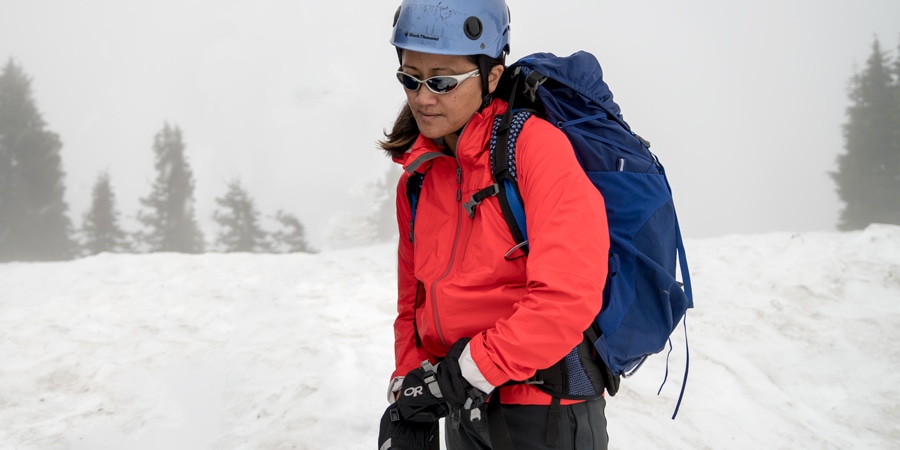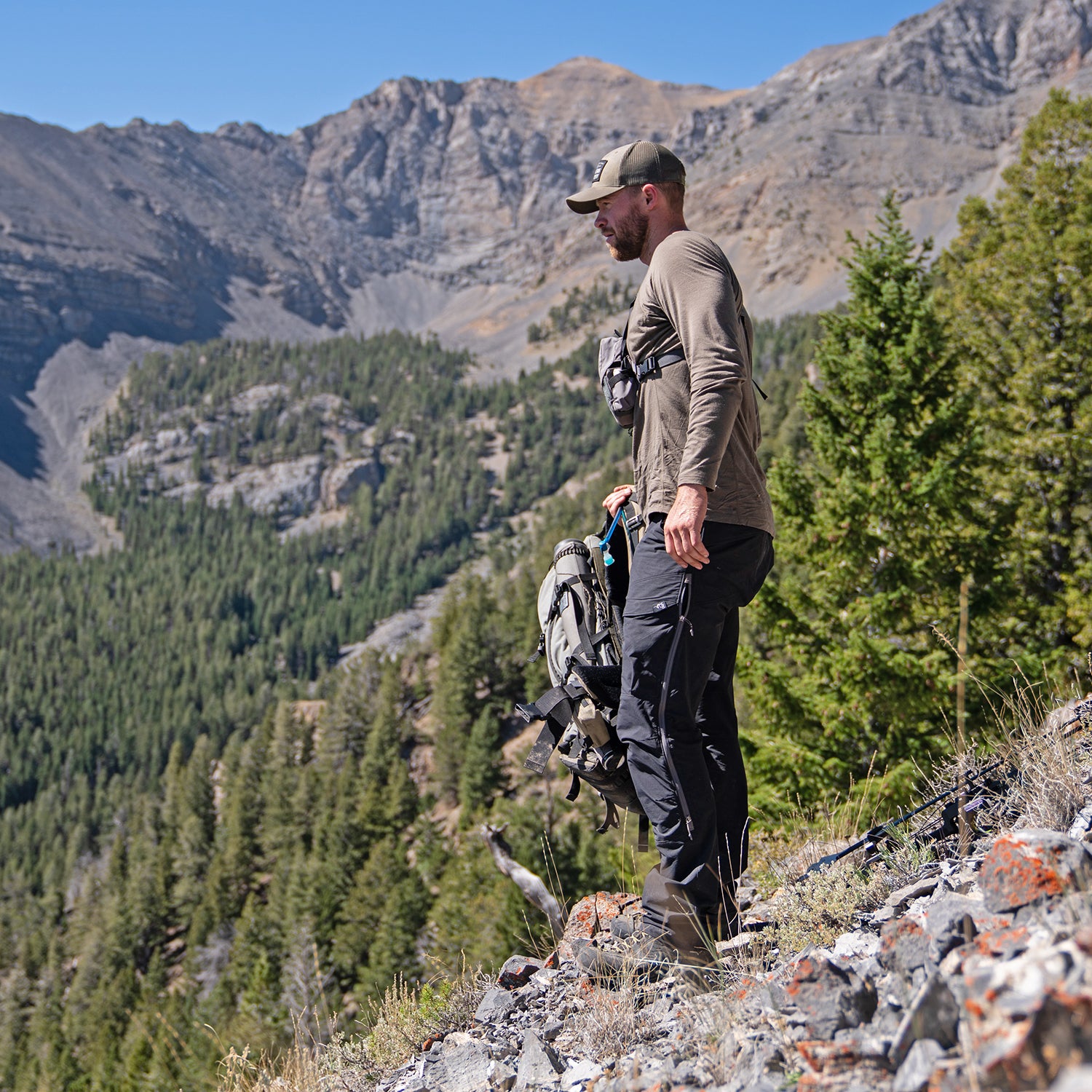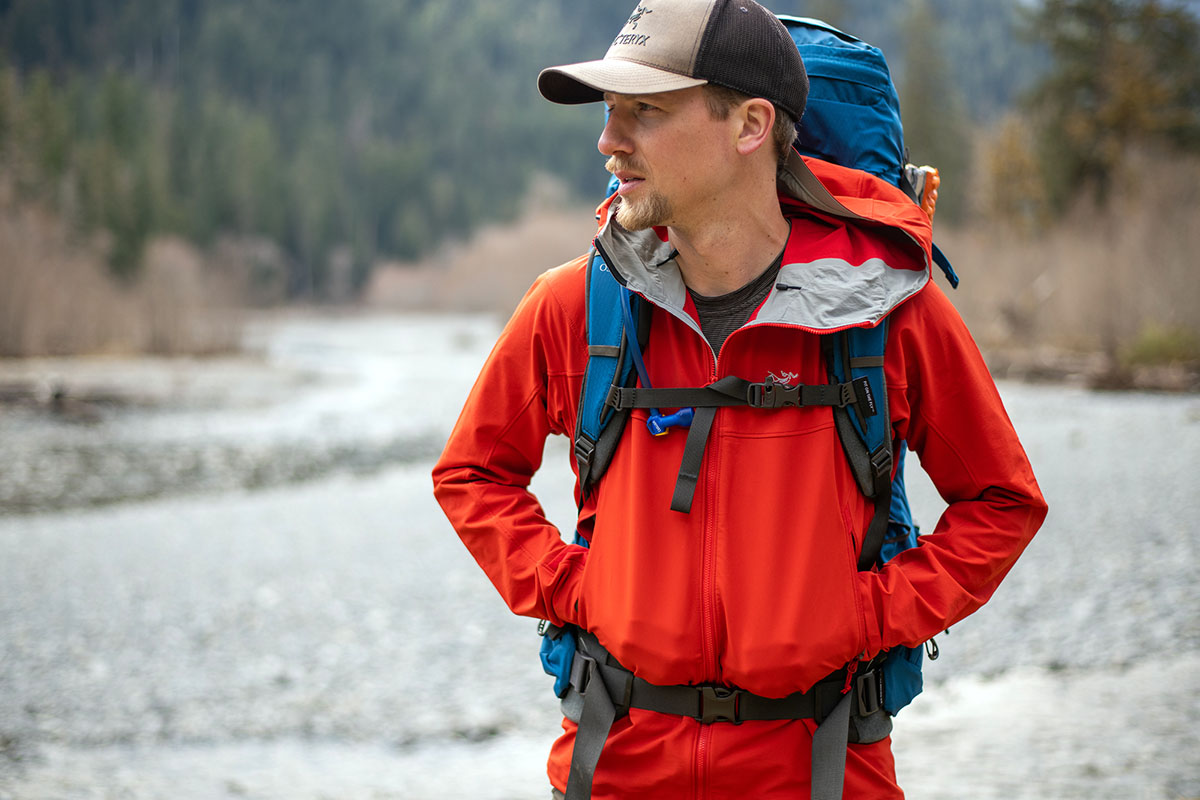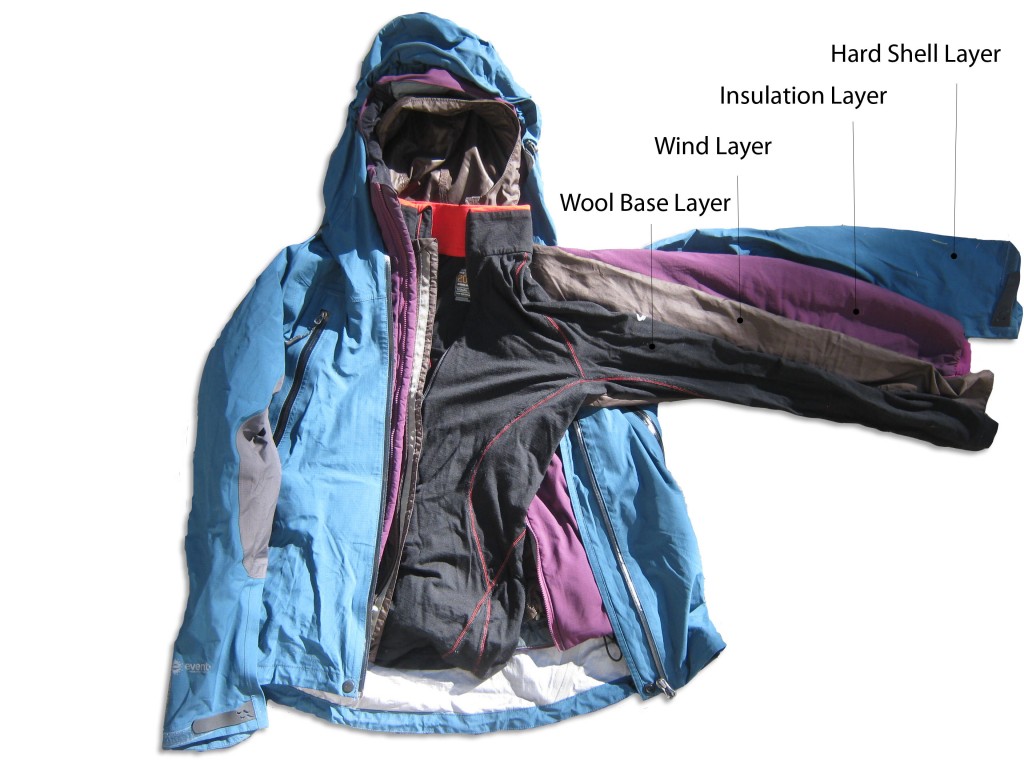The Complete Guide to Mountain Climbing Clothes: Expert Layering Systems for Alpine Adventures

Understanding the Layering System for Mountain Climbing
The foundation of effective mountain climbing clothes lies in understanding the three-layer system that has evolved from decades of alpine experience. This system isn't just theory—it's been tested on countless expeditions where the wrong clothing choices can mean the difference between reaching the summit and making an emergency descent.
During my first serious alpine climb on Mount Rainier, I learned this lesson the hard way. I had invested in expensive gear but didn't understand how the pieces worked together. The result? I overheated during the approach, got soaked with sweat, and spent a miserable night shivering in my sleeping bag despite having quality winter hiking clothes.
The three-layer system consists of the base layer for moisture management, mid layer for insulation, and outer layer for weather protection. Each layer serves a specific function, and when combined properly, they create a microclimate that keeps you comfortable across a wide range of conditions and activity levels.
Pro Tip from the Field
I always carry a small stuff sack dedicated to my "layer management system." This contains arm warmers, a lightweight vest, and a packable windbreaker. These transitional pieces allow for micro-adjustments without the complexity of completely changing layers mid-route.
The key to successful layering with mountain climbing clothes is understanding that it's not just about warmth—it's about maintaining optimal body temperature while managing moisture. Your body produces significant heat during exertion, and managing that heat and associated moisture is crucial for both comfort and safety. Quality hiking clothes form the foundation of this system.
Base Layers: Your Foundation for Success
Base layers are the unsung heroes of mountain climbing clothes. They're the pieces you'll wear closest to your skin for the entire duration of your climb, making their selection critical for comfort and performance. After testing numerous base layer systems across different conditions, I've learned that the fabric choice, fit, and construction details make enormous differences in real-world performance.

Merino wool remains my top choice for mountain climbing clothes base layers due to its unique properties. Unlike synthetic materials, merino wool naturally resists odor buildup, which becomes increasingly important on multi-day climbs. It also maintains its insulating properties even when damp, a crucial characteristic when you're working hard and generating moisture.
Merino Wool Pros
- Natural odor resistance
- Temperature regulation
- Insulates when wet
- Extremely comfortable
- UV protection
Synthetic Pros
- Quick drying
- More durable
- Less expensive
- Easy care
- Consistent performance
For mountain climbing clothes, I recommend investing in quality base layers from established outdoor brands. My current go-to setup includes the Carhartt Force Lightweight Base Layer Pants, which have proven incredibly durable across multiple seasons. The moisture-wicking technology works exceptionally well during high-output activities like steep approaches or technical climbing sections.
Fit is crucial with base layers—they should be snug but not restrictive. I learned this during a winter ascent in the North Cascades when loose-fitting base layers created air pockets that actually made me colder. Proper merino wool hiking clothes should feel like a second skin.
Real User Experience: "I've been using Smartwool base layers for three seasons of alpine climbing. The merino wool has maintained its softness even after dozens of washes, and I've never experienced the clammy feeling you get with cheaper synthetic base layers. Worth every penny." - Sarah M., verified Amazon purchase
Consider seasonal variations in your base layer selection. For summer alpine climbs, lightweight base layers work well, but as conditions become more challenging, midweight options provide better insulation without significantly increasing bulk. The Helly Hansen LIFA Base Layer Pants offer excellent performance in moderate conditions and have become a staple in my climbing kit for spring and fall conditions.
Mid Layers: Insulation and Versatility
Mid layers are where mountain climbing clothes get interesting, offering the most variety and requiring the most strategic thinking. These pieces provide the bulk of your insulation while maintaining breathability and allowing for easy adjustment as conditions and exertion levels change. After years of testing different combinations, I've developed a systematic approach to mid-layer selection that adapts to various climbing scenarios.

Fleece remains a cornerstone of effective mountain climbing clothes systems, particularly for active insulation. Modern fleece technology has evolved significantly from the bulky jackets of the past. Grid fleece, in particular, offers excellent warmth-to-weight ratios while providing superior breathability through its structured interior surface that minimizes contact with your base layer.
Softshell technology represents perhaps the most significant advancement in climbing-specific mid layers. These pieces combine wind resistance, water resistance, and breathability in ways that traditional fleece and hardshells cannot match individually. For technical climbing where you're constantly moving between protected and exposed sections, quality hiking clothes that include softshell pieces provide unmatched versatility.
Critical Mid-Layer Decision Points
- Activity Level: High output = breathable fleece; Variable output = softshell
- Weather Exposure: Protected routes = fleece; Exposed climbs = softshell
- Pack Space: Limited space = compressible synthetic; Ample space = bulkier fleece
- Duration: Day climbs = lighter options; Multi-day = versatile pieces
Synthetic insulation pieces fill a specific niche in mountain climbing clothes systems, particularly for belaying or during rest stops. Unlike fleece, synthetic insulation provides warmth even with minimal body heat generation, making it ideal for the stop-and-go nature of technical climbing. The ClimaFleece BaseSlayers Midweight Base-Layer offers excellent synthetic insulation performance that I've tested in subzero conditions.
My standard mid-layer system for alpine climbing includes both active and static insulation pieces. For the active climbing portions, I rely on a lightweight grid fleece that provides warmth without overheating during strenuous sections. For belaying and rest stops, I carry a synthetic insulation vest that can quickly be pulled on over my active layer.
Expert Insight: "The best mid-layer systems are modular. Rather than carrying one heavy jacket, I prefer two lighter pieces that can be worn separately or together depending on conditions. This approach provides more temperature options while often weighing less than a single heavy layer." - Mountain Guide, Cascades Region
When selecting mountain climbing clothes for mid layers, pay attention to details like pocket placement, hood compatibility, and ease of ventilation. Features that seem minor in the store become crucial when you're trying to access gear or adjust ventilation while wearing gloves in challenging conditions. Quality pieces like those found in outdoor hiking clothes collections prioritize these functional details.
Outer Layers: Weather Protection
Outer layers represent your last line of defense against mountain weather, and in climbing scenarios, they often mean the difference between continuing safely and making an emergency retreat. These pieces must provide complete weather protection while maintaining breathability and freedom of movement. Through extensive testing in conditions ranging from alpine drizzle to full storm systems, I've learned that the best outer layer systems are both highly technical and refreshingly simple in their application.

Hardshell jackets remain the gold standard for serious mountain climbing clothes when conditions turn severe. Modern 3-layer construction using advanced membranes like Gore-Tex Pro provides complete waterproof protection while maintaining breathability that was unimaginable in earlier generations of rain gear. The key is understanding when to deploy your hardshell and when lighter options will suffice.
I've learned to think of hardshells as emergency equipment that occasionally gets regular use. During a storm on the Ptarmigan Traverse, my hardshell jacket and pants kept me functional through 18 hours of continuous precipitation and wind. However, for 90% of my climbing, lighter and more breathable options provide better performance. This is why my outer layer system includes multiple pieces rather than relying on a single heavy jacket.
Outer Layer Selection Matrix
| Conditions | Recommended Layer | Key Features |
|---|---|---|
| Light precipitation | Softshell jacket | DWR treatment, breathability |
| Heavy rain/snow | 3L hardshell | Full waterproof, pit zips |
| High winds | Windshell | Lightweight, packable |
| Alpine storms | Expedition hardshell | Maximum durability |
Windshells deserve special mention in any discussion of mountain climbing clothes outer layers. These ultralight pieces provide surprising protection from wind chill while adding minimal weight and bulk to your system. For alpine starts when temperatures are low but precipitation isn't expected, a quality windshell over your mid layer often provides perfect protection during the approach.
Ventilation features are crucial in outer layer selection. Look for jackets with pit zips, chest vents, or back venting systems that allow you to dump excess heat without removing the layer entirely. During a traverse of the Picket Range, my ability to quickly ventilate my jacket prevented the stop-start cycle of completely removing and replacing layers that can slow progress and increase exposure time.
Real World Test: "I've put my Arc'teryx Beta AR jacket through everything from Scottish winter conditions to Cascade volcanos. After four seasons, the Gore-Tex Pro still beads water perfectly, and the construction shows minimal wear despite regular use on sharp rock and ice. The helmet-compatible hood has been a game-changer for technical climbing." - Mark D., verified gear review
The best outer layer systems for mountain climbing clothes include pants as well as jackets. Hardshell pants with full-length side zips allow you to put them on and remove them without taking off boots and crampons—a critical feature when weather changes rapidly at altitude. Consider survival clothes principles when selecting outer layers, as these pieces may need to function in emergency situations.
Climbing-Specific Clothing and Pants
Climbing-specific mountain climbing clothes address the unique demands of technical movement, exposure to abrasion, and the need for unrestricted mobility. These pieces often incorporate design elements and materials that wouldn't make sense in general outdoor clothing but prove essential when you're hanging from a belay or scrambling across loose rock. Understanding these specialized requirements has been crucial in building climbing wardrobes that perform when stakes are highest.

Climbing pants deserve careful consideration as they face the most abuse of any piece in your mountain climbing clothes system. Quality climbing pants must resist abrasion from rock and ice while maintaining stretch for high steps and dynamic movement. After destroying several pairs of hiking pants on technical routes, I learned to prioritize reinforcement in key wear areas and fabric technologies designed specifically for climbing applications.
Softshell pants represent the sweet spot for most alpine climbing scenarios. They provide wind and water resistance while maintaining breathability and stretch that hardshells cannot match. The Men's Compression Pants Set includes versatile pieces that work well as base layers under climbing pants or as standalone pieces for summer approaches.
Climbing Pant Features Checklist
- Articulated knees: Pre-curved construction for natural movement
- Reinforced areas: Extra material at knees, seat, and cuffs
- Stretch fabric: 4-way stretch for unrestricted movement
- Secure pockets: Zippered closure to prevent gear loss
- Gusseted crotch: Prevents blowouts during high steps
- Boot-compatible cuffs: Design that works with mountaineering boots
Specialized climbing tops must balance protection with mobility and breathability. Features like thumb loops prevent sleeves from riding up during belaying, while seamless shoulder construction prevents hot spots under pack straps. These details become critically important during long days when comfort directly impacts performance and safety margins.
For women climbers, finding mountain climbing clothes that fit properly while providing adequate protection can be challenging. Quality climbing clothes for women incorporate gender-specific fit while maintaining the technical features essential for alpine climbing. The Compression Pants for Sports offer excellent performance for active climbers of all genders.
Women's Specific Considerations: "Finding climbing pants that fit properly through the hips while providing adequate length was a struggle until I discovered brands that specifically design for female climbers. The difference in comfort and confidence is remarkable, especially on multi-pitch routes where fit issues can become serious safety concerns." - Jessica R., AMGA Single Pitch Instructor
Seasonal considerations play a major role in selecting climbing-specific mountain climbing clothes. Summer alpine routes may only require lightweight climbing pants and breathable tops, while winter and shoulder season conditions demand insulated options that maintain technical performance. Building a wardrobe that covers the full range of climbing seasons requires strategic investment in versatile pieces that can be layered effectively.
Consider the specific climbing disciplines you'll pursue when selecting specialized pieces. Mixed climbing demands different abrasion resistance patterns than pure rock climbing, while glacier travel requires different cuff designs than cragging. Quality lightweight hiking clothes can serve double duty for approach portions of climbs while maintaining the performance needed for technical sections.
My Experience: Lessons from the Mountains
Over the past fifteen years of alpine climbing across North America and beyond, I've made virtually every mistake possible with mountain climbing clothes—and learned valuable lessons from each experience. These hard-won insights have shaped my current approach to gear selection and system building in ways that no amount of research or gear reviews could have achieved.

My most valuable lesson came during a winter attempt on Mount Baker's North Ridge. I had assembled what I thought was a perfect mountain climbing clothes system based on magazine recommendations and online reviews. However, I failed to test the pieces together as a system or consider how they would perform during the specific demands of winter alpine climbing. The result was a collection of individually excellent pieces that worked poorly together, leading to dangerous overheating followed by rapid cooling during technical sections.
This experience taught me that effective mountain climbing clothes systems require real-world testing under conditions similar to your intended objectives. No amount of specification reading can replace spending time in the mountains understanding how different pieces perform together across varying conditions and activity levels. I now test every new piece extensively before committing to it for serious objectives.
Critical Lessons Learned
- System Integration: Individual pieces must work together seamlessly
- Real-World Testing: Backyard testing cannot replicate mountain conditions
- Redundancy Planning: Critical pieces need backup options
- Seasonal Specificity: One system cannot handle all conditions effectively
- Weight Consciousness: Every ounce matters on long approaches
Regional considerations have proven crucial in selecting effective mountain climbing clothes. What works perfectly in the dry cold of Colorado's fourteeners may be completely inappropriate for the maritime conditions of the Pacific Northwest. I've learned to build location-specific systems rather than trying to create one universal setup. This approach initially requires more investment but provides significantly better performance across varying conditions.
My current go-to system for Pacific Northwest alpine climbing centers around proven pieces that I've tested across multiple seasons. The foundation includes high-quality base layers, a lightweight grid fleece for active climbing, a softshell jacket for variable conditions, and a bomber hardshell for storms. This system has kept me comfortable and safe across dozens of routes ranging from technical rock climbs to glacier traverses.
Season Success Story: Last spring, my refined clothing system enabled a successful traverse of the Ptarmigan Traverse in challenging conditions. Over six days, I encountered everything from warm sunny weather to full storm conditions. The versatility of my layering system allowed me to stay comfortable and maintain good decision-making throughout changing conditions that forced other parties to retreat.
Budget considerations deserve honest discussion when building mountain climbing clothes systems. Quality pieces represent significant investments, but false economy in critical items can be dangerous. I recommend building systems gradually, starting with versatile pieces that serve multiple functions. A quality softshell jacket, for example, can serve as both mid layer and light outer layer, making it an excellent first investment.
Maintenance and care protocols have become increasingly important as my climbing wardrobe has evolved to include more technical pieces. Proper washing with technical detergents, DWR treatment renewal, and timely repairs can extend the life of mountain climbing clothes significantly. I now budget time for gear maintenance as seriously as I budget time for training, recognizing that well-maintained gear performs better and lasts longer.
🏔️ Ready to Build Your Mountain Climbing Clothes System?
What Are the Most Important Pieces of Mountain Climbing Clothes?
The most critical pieces include a moisture-wicking base layer system, insulating mid-layer like fleece or synthetic insulation, waterproof outer shell, softshell climbing pants, insulated jacket for belaying, and proper accessories including gloves, hat, and gaiters. Each piece serves a specific function in the overall system, and weakness in any single component can compromise the entire setup. Priority should be given to base layers and outer shells as these provide the most critical functions of moisture management and weather protection.
How Many Layers Should I Wear for Mountain Climbing?
Typically 3-4 layers work best: base layer for moisture management, mid-layer for insulation, outer shell for weather protection, and an additional insulation layer for cold conditions or rest stops. The key is adjustability based on activity level and weather conditions. During high-output climbing, you might strip down to base layer and light mid-layer, while belaying or rest stops may require adding insulation and outer layers. The ability to fine-tune your thermal regulation through strategic layering is what separates effective mountain climbing clothes systems from basic outdoor wear.
Should I Choose Synthetic or Down Insulation for Climbing Clothes?
Both have distinct advantages in mountain climbing clothes applications. Down offers superior warmth-to-weight ratio and compressibility but loses insulation when wet and dries slowly. Synthetic insulation retains warmth when wet and dries faster but is bulkier and heavier than equivalent down pieces. For consistently wet conditions like Pacific Northwest alpine climbing, choose synthetic; for dry cold conditions like Colorado winter climbing, down is superior. Many experienced climbers carry both, using synthetic for active pieces and down for belay jackets where maximum warmth with minimal weight is crucial.
Conclusion
Building an effective mountain climbing clothes system requires understanding the specific demands of alpine environments, investing in quality pieces that work together as a system, and testing everything thoroughly before committing to serious objectives. The lessons I've shared come from years of real-world experience across diverse mountain ranges and conditions, representing both successes and expensive mistakes that shaped my current approach to gear selection.
The most important principle is that mountain climbing clothes must function as an integrated system rather than a collection of individual pieces. Each layer must complement the others while providing specific functions like moisture management, insulation, or weather protection. This systematic approach ensures consistent performance across varying conditions and activity levels that characterize alpine climbing.
Remember that the best mountain climbing clothes system is the one you understand completely and have tested thoroughly. Start with versatile pieces that serve multiple functions, then add specialized items as your climbing objectives become more demanding. Quality pieces like those found in summer hiking clothes and affordable hiking clothes collections can provide excellent performance when selected thoughtfully and integrated properly.
Continue Your Alpine Journey
Explore more essential guides for mountain adventures:
Remember: the mountains will always be there, but the conditions that make climbing safe and enjoyable are fleeting. Invest in quality mountain climbing clothes that enable you to seize those perfect windows when they appear.